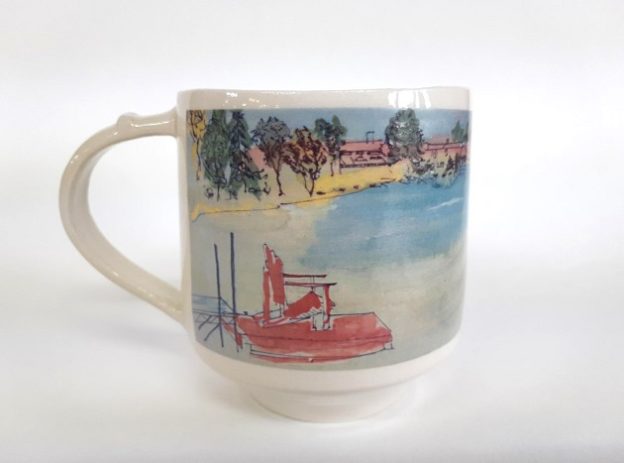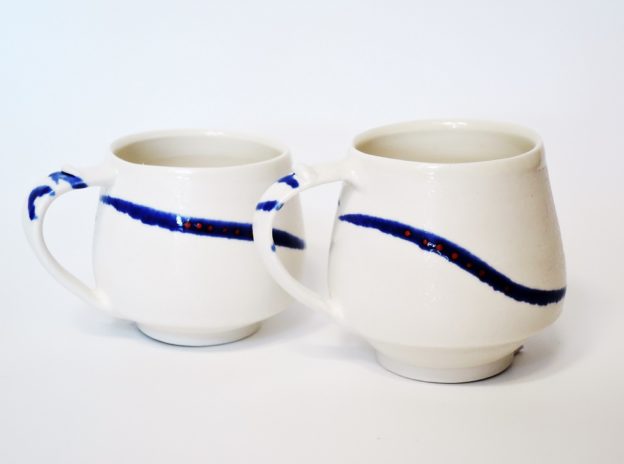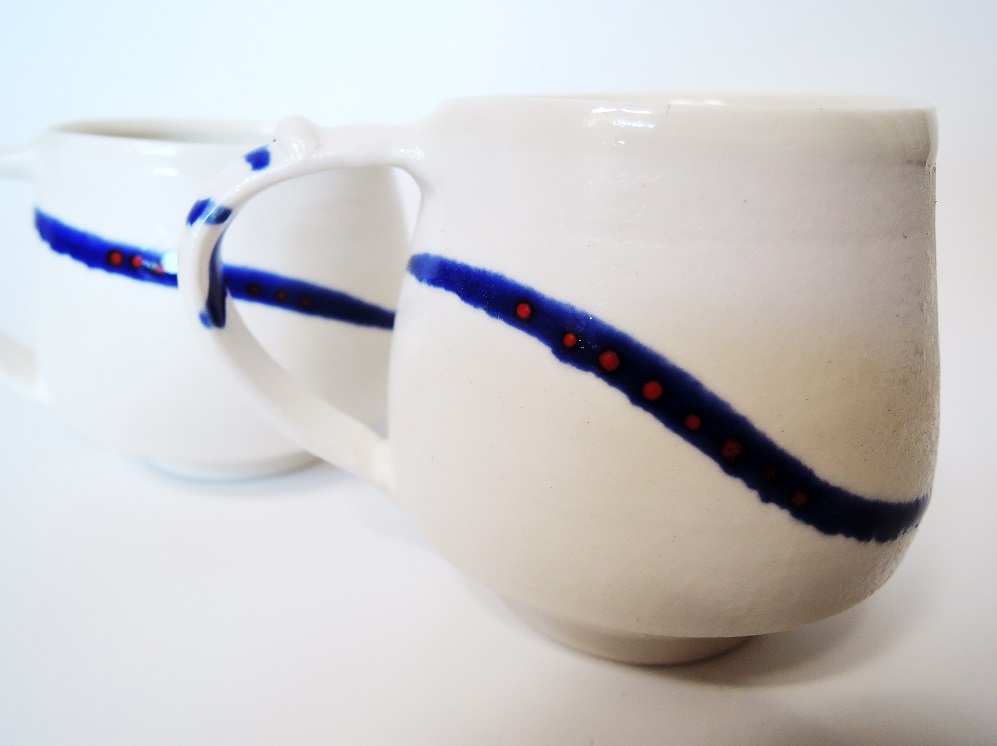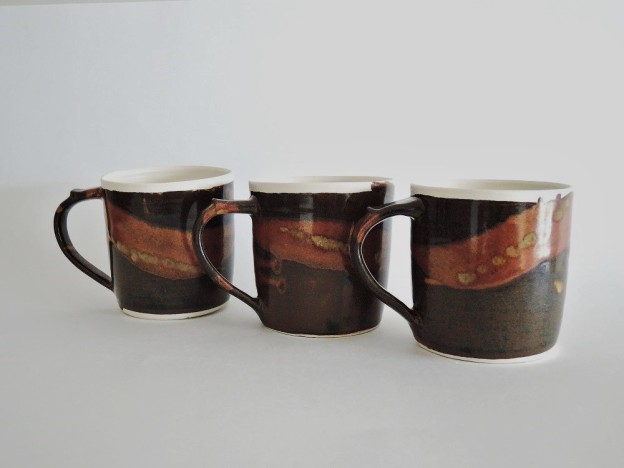Why not have a decal made of a watercolour I painted during a typically Canadian weekend at a cottage on the lake? Sure, no problem, says Art Petch (Ottawa).”Let’s see how close I can get to the colours in your original.” I left it to him to decide how to convert the RGB image file to the CMYK colour profile suitable for the ceramic pigments in the printing.
On the wheel, I had thrown a series of standard, large mugs of the same height and diameter. I needed the sides to be perpendicular, to allow for a smooth application of the decal. Applying the decal should be straightforward, only requiring careful smoothing of the surface, to remove any air bubbles or water trapped beneath the film.
But mistakes do happen; they may, of course, lead to intriguing results. Once, in a moment of inattention, I applied the decal the wrong way round. The decal itself should lie on the glazed surface, with the lamination on top. Switching this around gets you an unexpected, crackled effect.
Stoneware, hand thrown; decals.
Fired to cone 6, in oxidation.



